19 Outstanding Roman ruins in Britain to visit
There are dozens of Roman Ruins in Britain and they are dotted around the country from Scotland to Wales. From the heritage site of Hadrian’s Wall (which most people have heard of) to many lesser-known Roman Forts, Villas and even castles.
Britain has a surprisingly large amount of Roman ruins that can still be visited today. Wales has some of the best-preserved sites in the country and even Scotland can boast of Roman Ruins dating to the 1st and 2nd centuries.
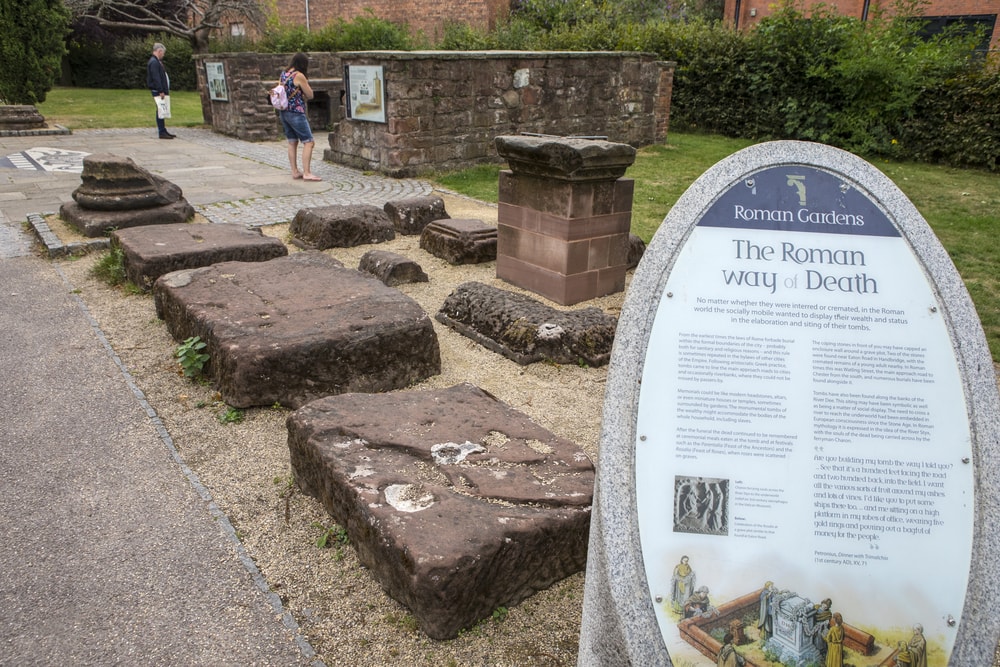
- 19 Outstanding Roman ruins in Britain to visit
- When did the Romans arrive in Britain?
- When did the Romans leave Britain?
- What was the Roman legacy in Britain?
- 20 incredible Roman Ruins in Britain
- Roman Ruins in England
- Hadrian’s Wall
- Burgh Castle Norfolk Broads
- Ribchester (bremetennacum veteranorum) Roman Fort
- Aldborough North Yorkshire
- Brading Roman Villa, Isle of Wight
- Canterbury Castle
- Roman Baths in Bath
- Mamucium in Manchester
- Roman Lighthouse at Dover Castle
- Roman Ruins of Colchester
- Arbeia Roman Fort South Shields
- Roman Ruins in York: City Walls
- Birdoswald Roman Fort Cumbria
- Vindolanda Northumberland
- Roman Walls Silchester
- Chedworth Cotswolds
- Viriconium Wroxeter
- Littlecote Villa and Mosaic
- Dorchester Roman Town House
- London Roman amphitheatre
- Roman Ruins in Wales
- Roman Ruins Scotland
When did the Romans arrive in Britain?
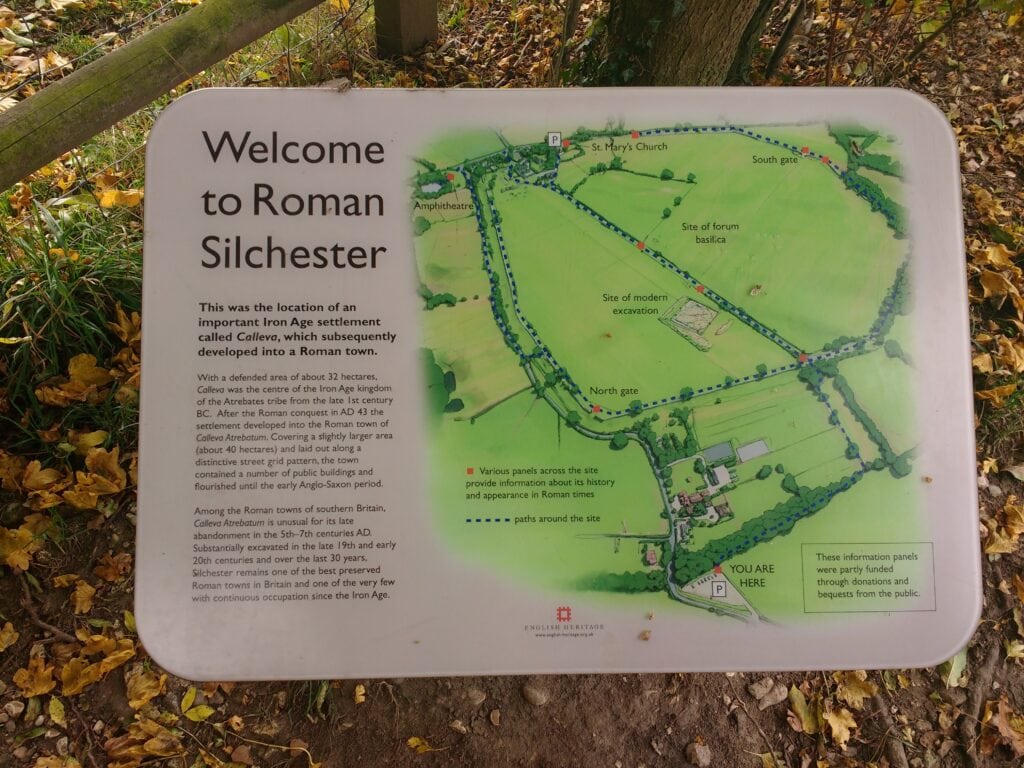
Roman England timeline
During the Gallic Wars, Gaius Julius Caesar invaded Britain twice: in 55 and 54 BC. Caesar planned to attack the Britons from Dover but in 54 BC he actually landed 6 miles from his anticipated landing due to the Britons being lined up on the shore to repel the invaders.
The Britons followed the Romans down the coastline and fought fiercely but were eventually overwhelmed by the Romans. After a year of battling the Britons with very little success Caesar withdrew to gather his forces. He returned in 55 BC with over 30,000 troops and managed to fight the Britons and win one tribe at a time.
It was Emperor Claudius who ordered the invasion of Britain in 43 AD which, over a period of time, was successful.
The arrival of the Angles, Saxons and Jutes took place in the 5th century after the Roman withdrawal in 409-410 AD.
The Romans returned and invaded Britain in AD 43. The emperor Claudius sent an army of 40,000 men. Many tribes in Britain realised the overwhelming number of soldiers and the power of the army and made peace treaties with the Romans.
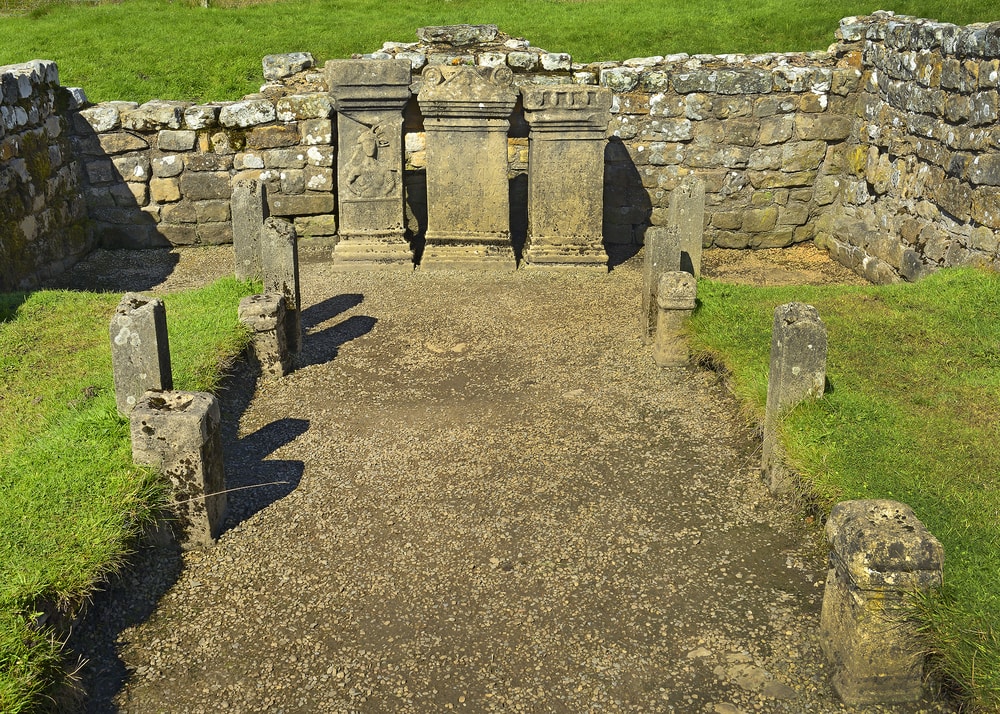
The Britons were relatively quiet for 10 years or more as Roman control brought many ‘modern’ conveniences into the areas where they were stationed. In AD 61 Boudica wife of the King of the Iceni who had lost her lands when her husband died and her two daughters were raped declared war on the Romans. Boudica burnt down Colchester, St. Albans and London but was defeated at the Battle of Watling Street.
Boudica was defeated when the Roman legions returned from their attempts to wipe out the Druids in Anglesey Wales to deal with Boudica’s revolution.
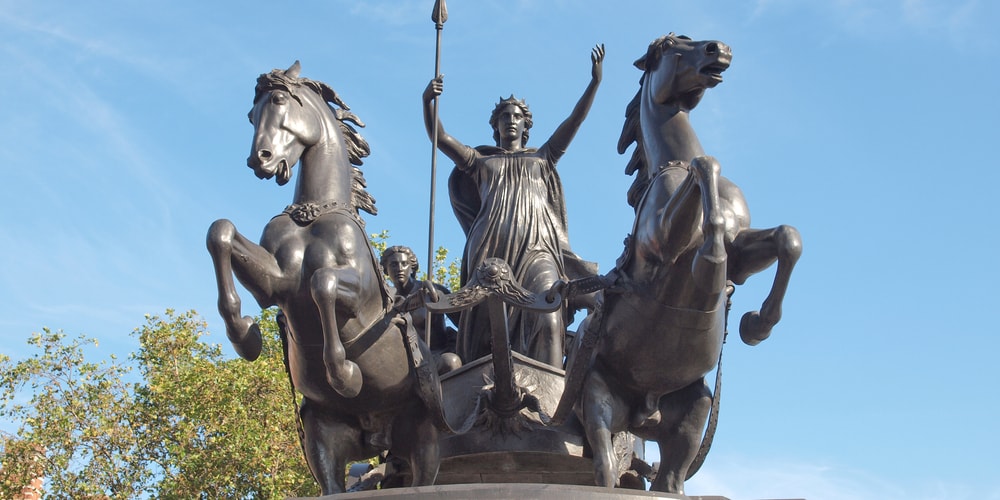
Clashes went on for many years all over Britain, which meant that the Romans never actually gained control over the entire country. Legions were located at Chester, Caerleon and York and the Romans moved north to attempt to conquer Scotland. Eventually, the Romans gave up on Scotland and in 122AD Emperor Hadrian had the famous Hadrian’s Wall built.
When Hadrian died in 138 AD his successor Antonius Pius abandoned Hadrian’s wall and tried to push further north where he had the Antonine Wall built between the Clyde River and the Forth. northwards. Around 160 AD the Antonine Wall was abandoned and Hadrian’s Wall again became the northern boundary of the Roman Empire in Britain.
The Romans never did succeed in subduing all of Britain. They always had to maintain a significant military presence to control the threat from the unconquered tribes. But most people in southern Britain settled down to Roman order and discipline. Towns appeared for the first time across the country, including York, Chester, St. Albans, Bath, Lincoln, Gloucester and Colchester.
All of these cities are still linked today by the system of Roman military roads radiating from London. The roads the Romans built allowed for the easy transport of Roman luxuries and items from around the rest of the Roman Empire.
When did the Romans leave Britain?
By AD 407 there were only a few Roman garrisons left in Britain and one garrison proclaimed General Constantine III, Emperor of the Western Roman Empire. Constantine himself brought a garrison together to cross the channel and invade Gaul leaving Britain undefended and so the local population finally got rid of Roman authority by 409 AD.
With no Romans in place to defend Britain the Saxons, Scots, Picts and Angles invade and attempt to conquer Britain. Turning to Emperor Honorius for help the Britons wrote asking for help but were turned down and that marked the end of the Romans in Britain.
What was the Roman legacy in Britain?
The Romans introduced the people of Britain to brick and stone buildings, public baths sanitation – toilets, running water including hot water, theatres, medicine, education, public order, irrigation, freshwater systems, public health and public order essentially “civilization” as the Romans knew it. A system of capitalism was also introduced so the wealthy had country villas, or palaces, with underfloor heating, mosaics on the floor and glass in the windows alongside baths and running water.
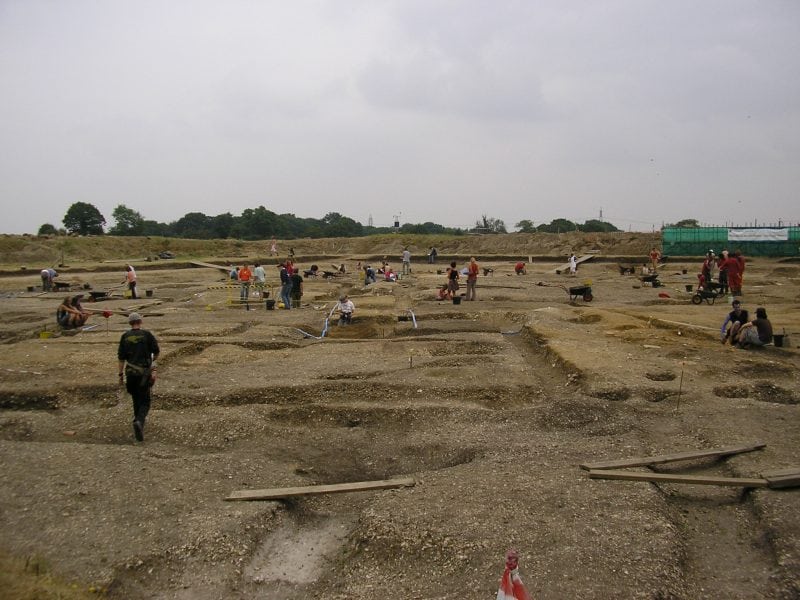
20 incredible Roman Ruins in Britain
Roman Ruins in England
Hadrian’s Wall
Hadrian’s Wall is a large Roman fortification that crosses the entire width of northern England, stretching for 117 kilometres between the North and Irish Seas. Built around 122 AD during the reign of Emperor Hadrian, the Wall marked the northern edge of Roman Britain and the northern boundary of the Empire. Added to the UNESCO World Heritage List 1987 along with the nearby Antonine Wall in Scotland, Hadrian’s Wall is one of the best-known Roman ruins still remaining in England, and one of the best World Heritage Sites in England.
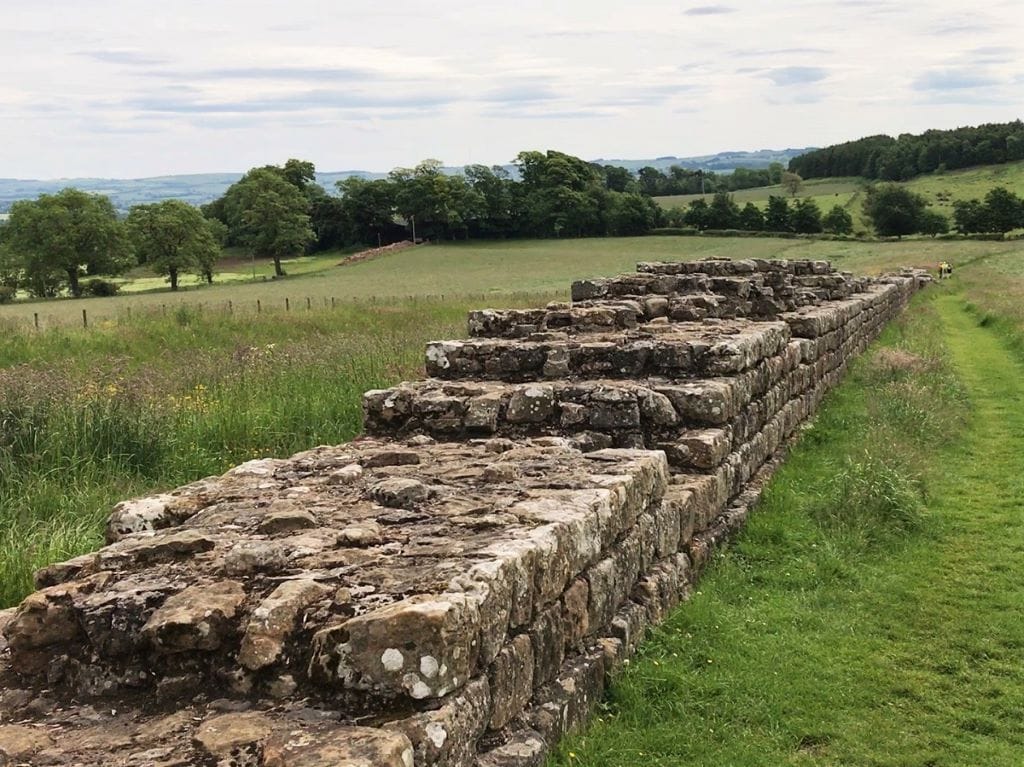
Visiting Hadrian’s Wall today is a fascinating experience. Surprisingly, much of the wall still remains intact, particularly in the central areas (much of the stone has been plundered towards the coasts). Many foundations are still visible, along with ditches, ramparts and other earthworks. It’s easy to see how it was the inspiration for Game of Thrones’s The Wall.
Intrepid explorers have the option of following Hadrian’s Wall Path, a hiking trail that runs alongside the wall’s entire length. The journey typically takes about a week. But for more relaxed ways to see Hadrian’s Wall, some of the best spots are around the ruined fortresses of Vindolanda at Little Chesters, and at Vercovicium (also known as Housesteads).
Burgh Castle Norfolk Broads
Burgh Castle is one of the best-preserved Roman monuments in the country, built 3rd century AD. The main route into the fort is the Eastern gate when entering the fort area you have a stunning view across Breydon Water and is the perfect place to watch the Sunset over the Norfolk Broads.
Originally enclosing an area of about six acres, the walls of the fort were around 3.5 metres wide at the base and taper to 1.5 metres at their full height of around 4.5 metres.
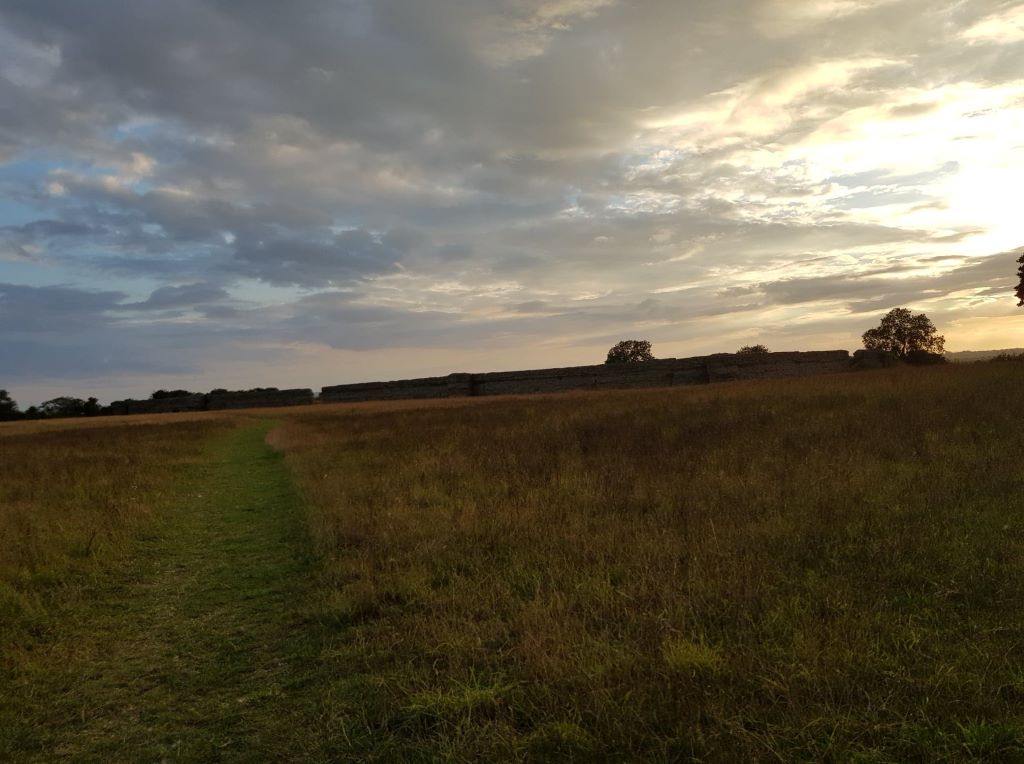
Over the centuries the walls have been plundered for building material, exposing the mortared flint rubble core, but they were originally faced inside and out with cut flint and tile in alternating bands. A well-preserved stretch of this facing survives along the outside of the south wall.
For many years it was hidden from public view, but in recent years it has been upgraded with signs and quite a large car park, there is no charge for the parking and you do not have to pay anything to visit the Burgh Castle Fort, although there are donation boxes dotted throughout the site, it also has a large field next to it which is occupied by dog walkers enjoying the views and the open air.
There are a few information boards giving you further information and an idea of what it would have looked like in its prime.
Burgh Castle is a lovely little village just outside of Great Yarmouth, the village has a number of Holiday Parks to stay at and is the perfect getaway to enjoy both the Holiday Resort and the Norfolk Broads.
There are literally hundreds of Roman ruins and sites in Britain right across the country. From the moment they invaded in 43AD through to their leaving in 410AD, the Romans stamped their mark on Britain through military fortifications, cities, civic buildings and great monuments. Contributed by Mandy of Great Yarmouth Family Fun.
Ribchester (bremetennacum veteranorum) Roman Fort
Excavations conducted in 1969 outside the NW defences of the fort found occupation evidence from the mid/late-1st to the late-2nd centuries AD, including at least two periods in Flavian/Trajanic times and several others of later date.
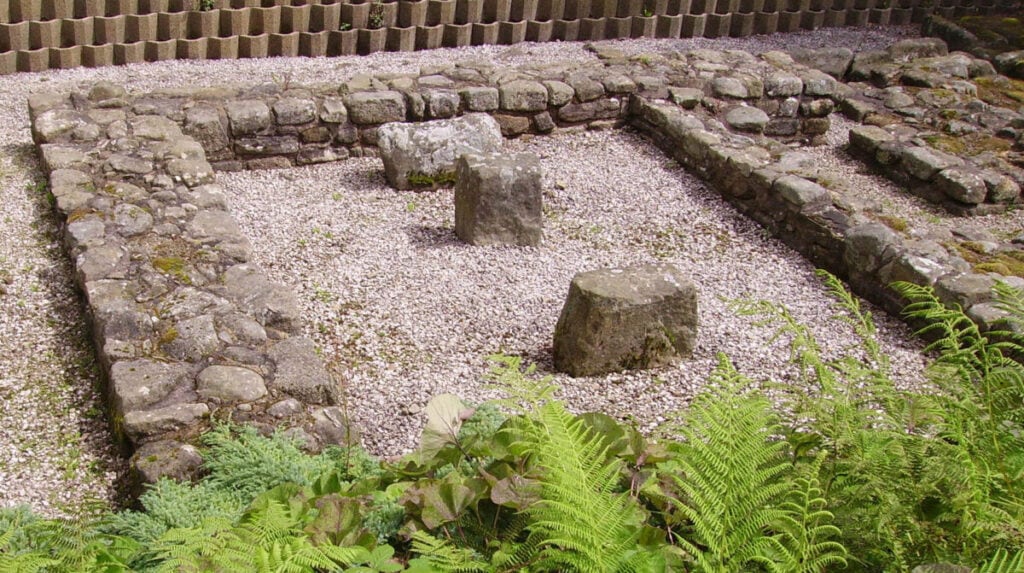
When the Domesday Book was produced in 1086, Ribchester was even then known by its modern name and is recorded as Ribelcastre, which translates simply as ‘Roman Fort on the River Ribble’; the Roman name had apparently been forgotten in the five hundred or so years between the end of Roman Britain and the arrival of the Normans in the eleventh century.
The Ribchester Roman Museum is Lancashire’s only dedicated Roman antiquities museum. Come and explore the fascinating ancient Roman history of this picturesque village on the banks of the river Ribble that was once the Roman cavalry fort and settlement of Bremetenacum Veteranorum.
Aldborough North Yorkshire
Today, Aldborough is a sleepy village in North Yorkshire, one mile from the bustling market town of Boroughbridge. With pretty stone houses, a delightful 14th-century church, a maypole on the village green, and a lovely little pub, Aldborough is quintessentially British.
During the Roman occupation of Britain, however, it was the site of a significant Romano-British town, known as Isurium Brigantum. The most prominent Celtic tribe in the area at the time, the Brigantes, used this place as their capital from AD160.
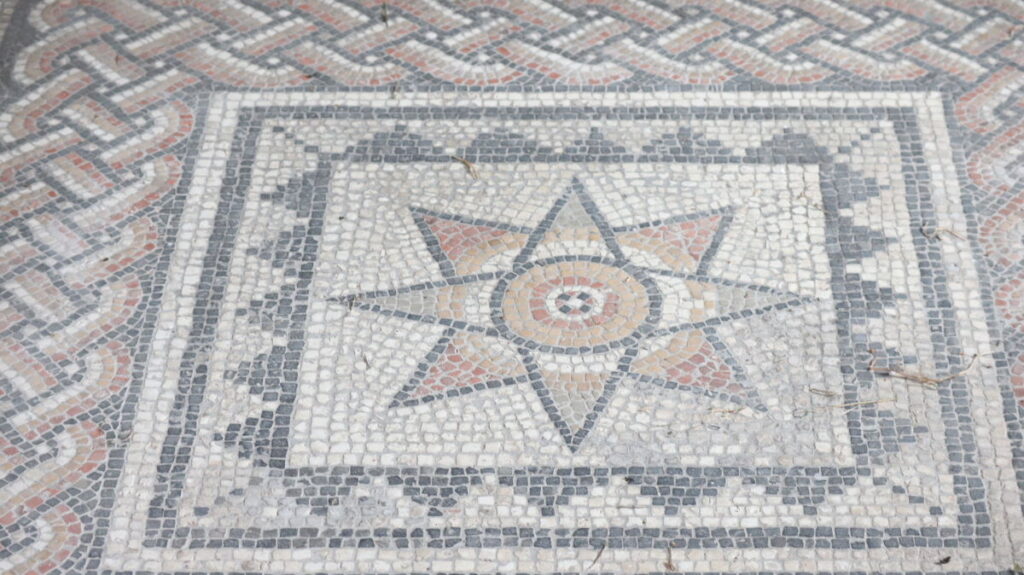
While the site and the Roman ruins here are modest, there’s much archaeological work yet to do, to uncover the full extent of the old settlement. You can see one corner of the ancient Roman defences, two mosaic pavements in their original positions, and the small museum with its collection of Roman finds.
The site is within a green and lovely Victorian arboretum, making it a peaceful place to visit. English Heritage manages the site, charging £5 per visitor.
The best way to visit Aldborough is on a day trip from York. Regular buses run between York and Boroughbridge. If you’re driving, park in the free car park at Boroughbridge, as there’s no parking for the ruins in Aldborough. Contributed by Coralie of GreyGlobetrotters
Brading Roman Villa, Isle of Wight
This large Roman villa and courtyard were built in the 1st century AD and despite frequent Anglo-Saxon raids and the occasional fire, remained in use until the 4th century AD. Today all of the 12 ground-floor rooms can still be seen, including a fabulous mosaic in the main entertaining room.
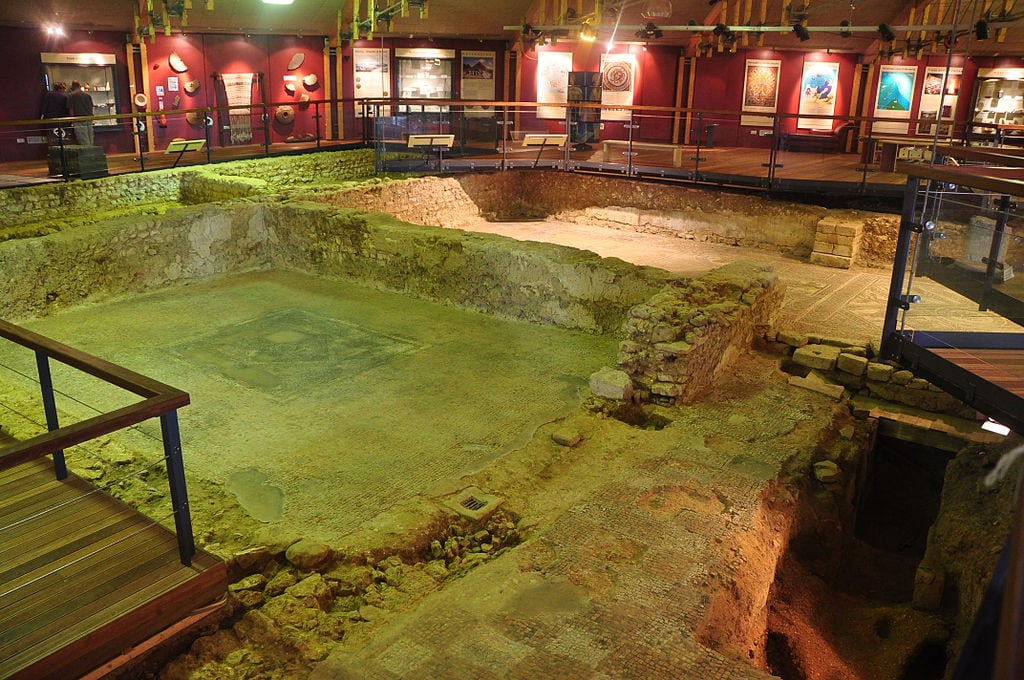
Canterbury Castle
Canterbury Castle with Rochester Castle and Dover Castle are the three original Royal castles in Kent. All three were built after the Battle of Hastings, in the 11th century on the main Roman road from London to Dover.
This castle is one of the oldest Norman castles in England and has an interesting history. The castle has been converted into a prison in the 13th century and later in the 18th, it was taken down. Now a few towers of the building and the lower half are still there, which gives you a sense of what the castle looked like at its peak.
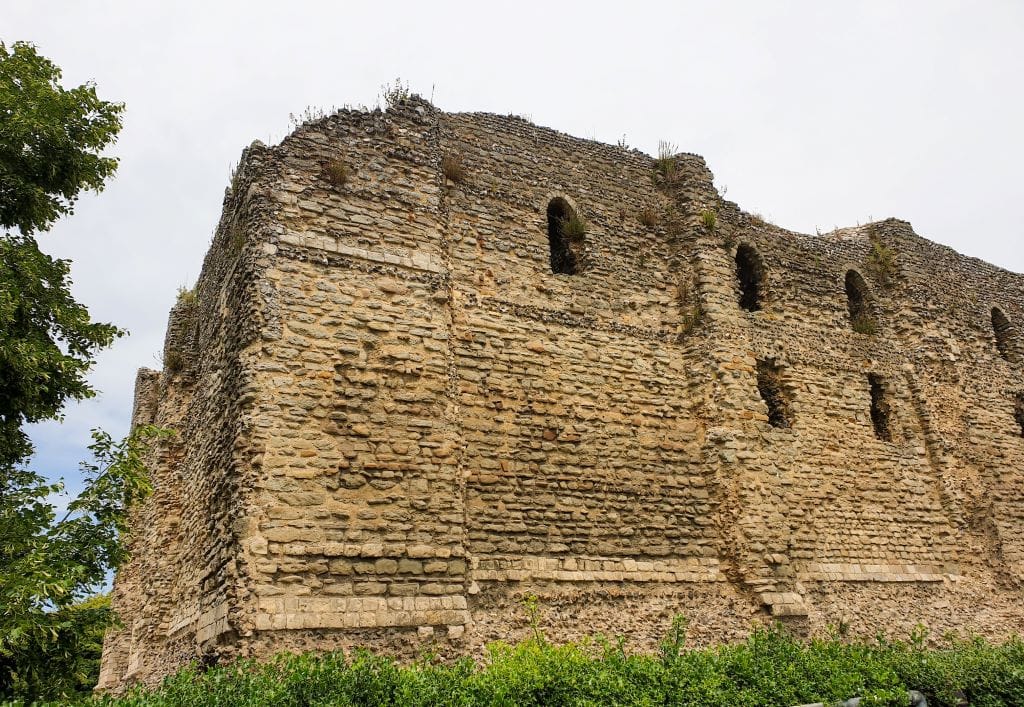
It is not allowed to enter the castle as it is listed as a dangerous building, but you can walk around the ancient ruin and take photos.
The best way to see the castle is to take a day trip to Canterbury, the city with a rich history and culture only 100 km away from London. You can drive to Canterbury or take a train.
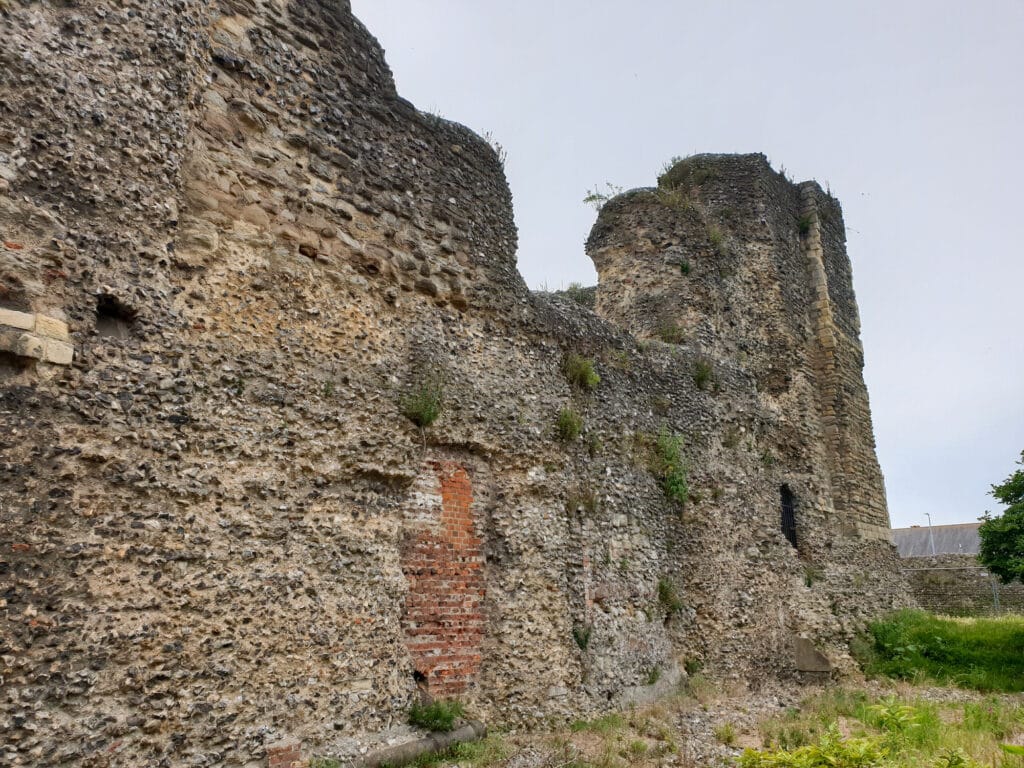
The castle is located at one end of the still existing City Wall. by a short walk, you can find yourself in a city centre where you can see the famous Canterbury Cathedral. Contributed by Mansoureh from Travel with Mansoureh
Roman Baths in Bath
In the heart of the city of Bath in the South West of England sit some of the best-preserved Roman remains in the world.
The baths after which the city is named are fed by a naturally heated water source deep underground and these steaming hot springs are still providing a supply to the Baths even today. If you’re visiting Bath with kids then the Roman Baths are a must.
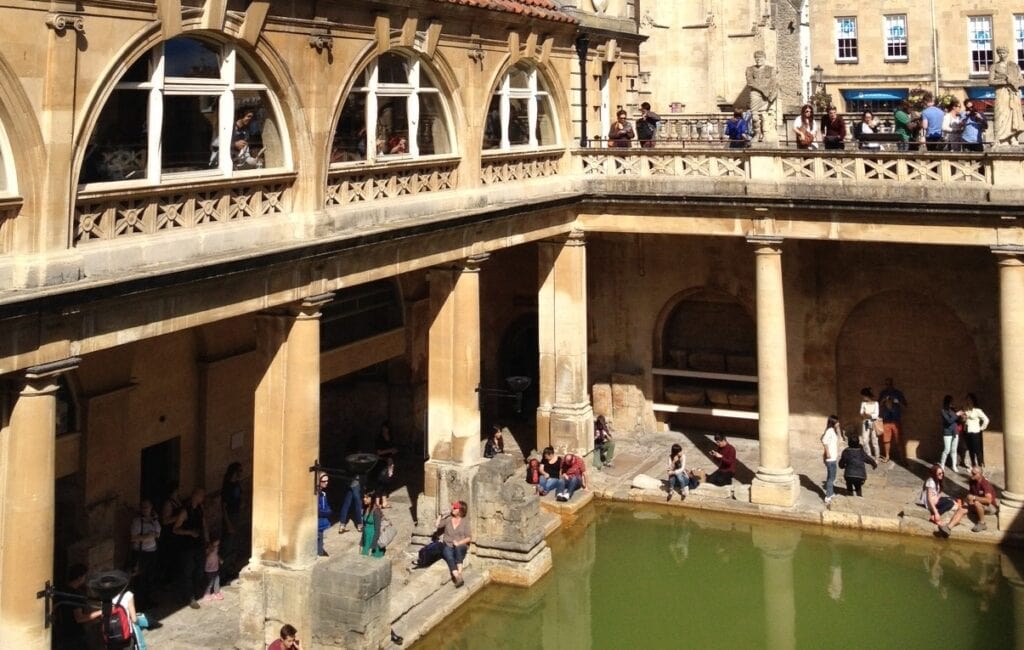
Visitors can step back in time to the Roman Baths, walking on the ancient pavements of Roman Britain and stepping inside the rooms where plunge pools and changing rooms once stood.
Alongside the ruins of the Temple of Sulis Minerva, you can also discover more about the people who lived alongside the baths thanks to a display of Roman artefacts and a bronze sculpture of the Goddess to whom the temple was dedicated.
The audio guides at the Roman Baths are a great way to bring the experience to life, and there are specially designed free guides for younger visitors too, including a Hoot the Owl activity trail voiced by Michael Rosen and you might spot a costumed character who can tell you even more about life in Roman Bath.
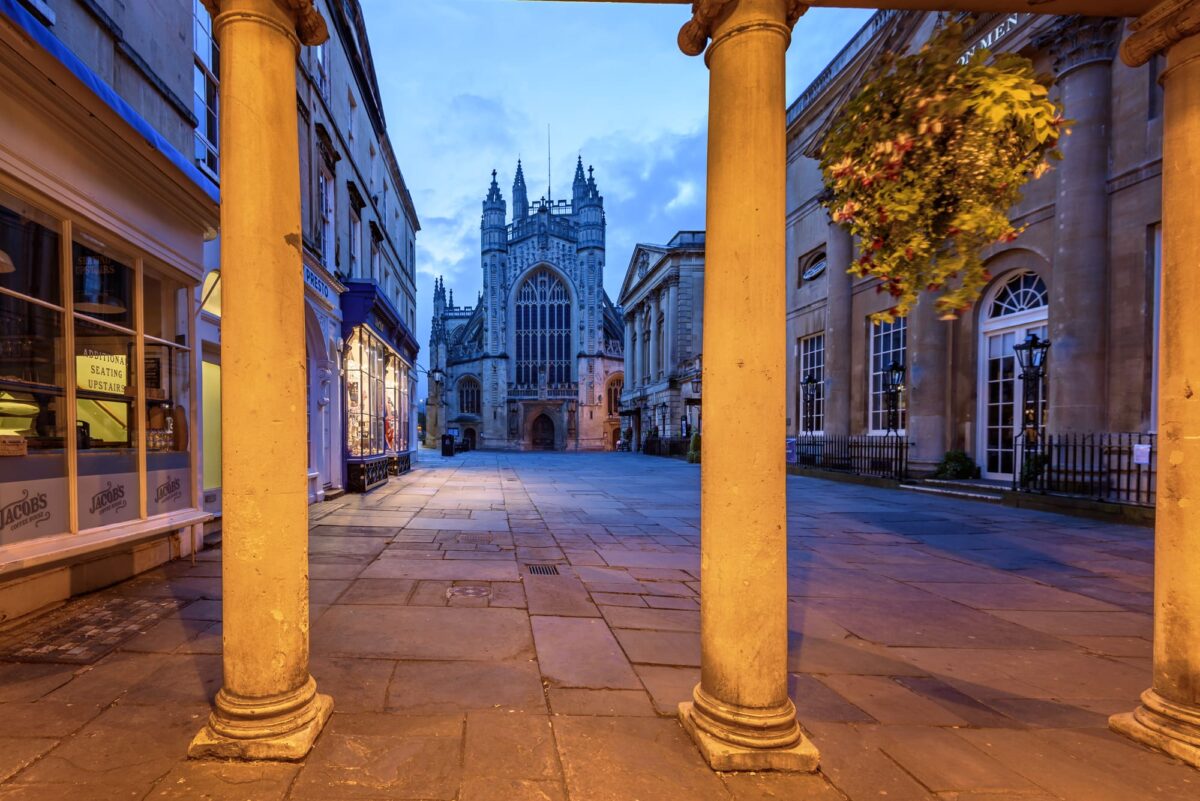
You can spend a good hour exploring the Baths and following in Roman footsteps (family tickets start at £57) but sadly there’s no chance of taking a dip. Instead finish your visit by stopping into the Georgian pump rooms built alongside the Roman ruins, for a genteel afternoon tea or if you want to try a modern take on the Baths, the neighbouring Thermae Bath Spa is fed with water from the same source used by the Romans two thousand years ago. Contributed by Nicola from GlobalMouseTravels
Mamucium in Manchester
In the Castlefield area of Manchester, only steps away from the Museum of Science and Industry (MOSI), you will find Mamucium, a Roman fort built on a rocky outcrop that sits where the Rivers Irwell and Medlock meet.
Mamucium was established in 79AD by Roman soldiers for its strategic position on this rocky point. This fort was originally built with timber, and then enlarged and rebuilt with stone – which is what you can still see today. After 410AD, when the Roman soldiers abandoned the fort, it was left to decline as the Manchester we see today was built up around it.
This Roman site is well worth a visit purely for its juxtaposition with its surroundings. A pub, several shops, and plenty of apartment buildings surround Britain’s first Urban Heritage Park where these ruins lie.
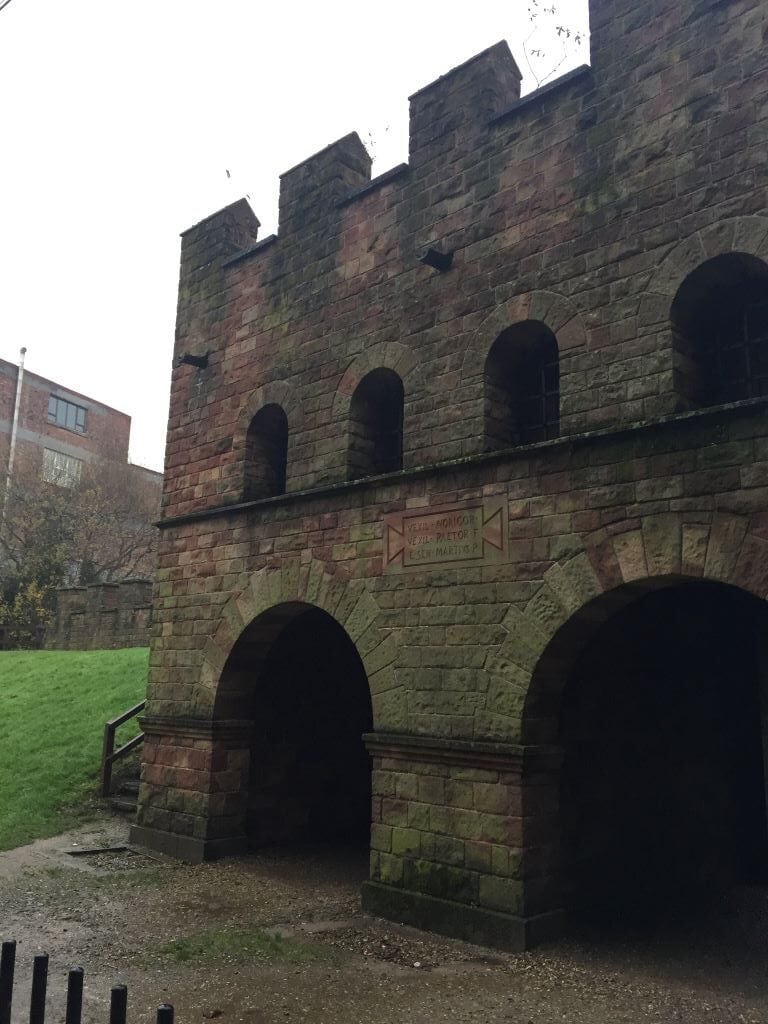
Despite the modern surroundings, these stone building foundations are an impressive reminder of Roman history in the Northwest of England. If you walk a little further along to the southwest of the park, you will find a reconstructed part of the Roman Fort upon excavated foundations.
Visiting Castlefield’s Urban Heritage Park is free to the public and open all year round. After a visit, don’t forget to fill up on fish + chips from the local chippy. Contributed by Nick of illnesstourltra
Roman Lighthouse at Dover Castle
Dover Castle has played a significant role in English history over several centuries since a hill fort was established on the site around 800 BC. While the Castle Keep, also known as the Great Tower, was started by Henry II in the 12th century, and the tunnels were used for planning during World War II, there are still some Roman ruins.
Roman Pharos is the name of this lighthouse at Dover Castle. It dates back to 43 AD and is the oldest structure at the site. At one time, the Pharos was used as a bell tower for the adjoining Anglo-Saxon church, St. Mary in Castro. Take a quick peek inside and be sure to look up. The lighthouse is the most complete standing Roman building in England and one of only three Roman lighthouses to survive from the whole of the former Roman Empire.
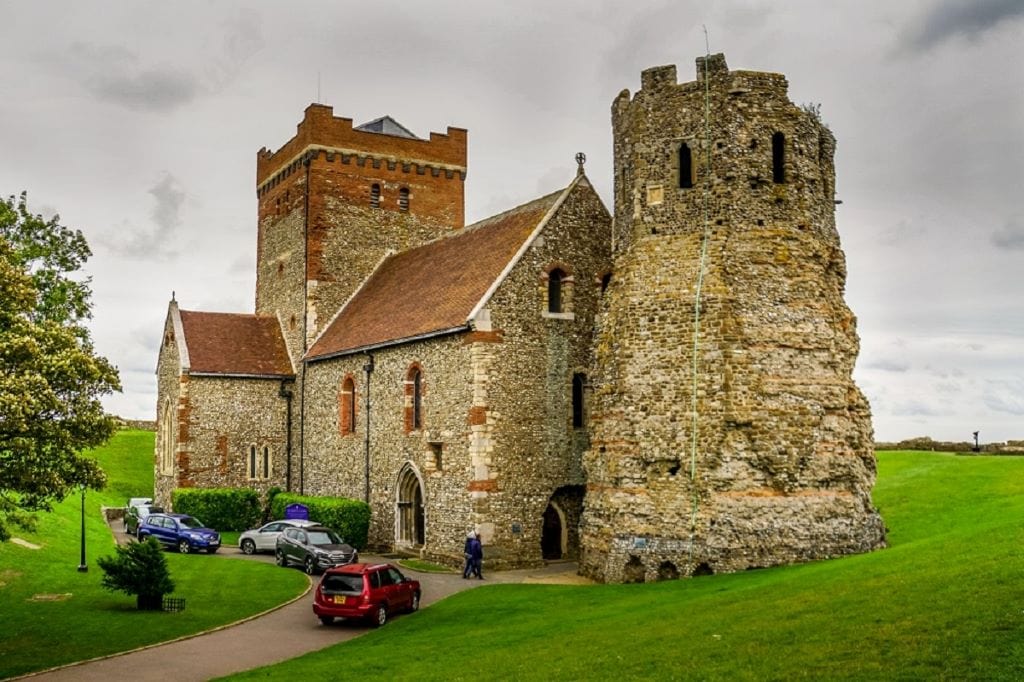
In addition to the lighthouse and church, there are several other things to see at Dover Castle. Explore the Castle Keep and see what it might have looked like during the time of Henry II. Tour the Secret Wartime Tunnels and learn more about Operation Dynamo. See what life was like at the Underground Hospital that was used during World War II. Explore the Medieval Tunnels that were part of the Castle’s defences.
Dover Castle is an English Heritage site, so members can visit it for free. The normal admission price for adults is 24 GBP. It’s best to allocate a day to see Dover Castle as it is much larger than you might expect. Contributed by Anisa of TwoTravellingTexans.
Roman Ruins of Colchester
Known as Britain’s First City, Colchester is an extremely underrated place that hardly gets any international tourists. At less than one hour by train from Liverpool Street Station, it’s a great destination for day trips from London.
Colchester is famous for its Roman ruins – there are quite a few scattered around the historical centre, including the remains of a Roman wall; and there even is a road named “Roman Road.” There used to be 3 theatres and a Roman chariot-racing circus. Colchester Castle, one of the most iconic sights in town, was built on the foundations of the Temple of Claudius, which can be still seen during guided tours of the Castle.
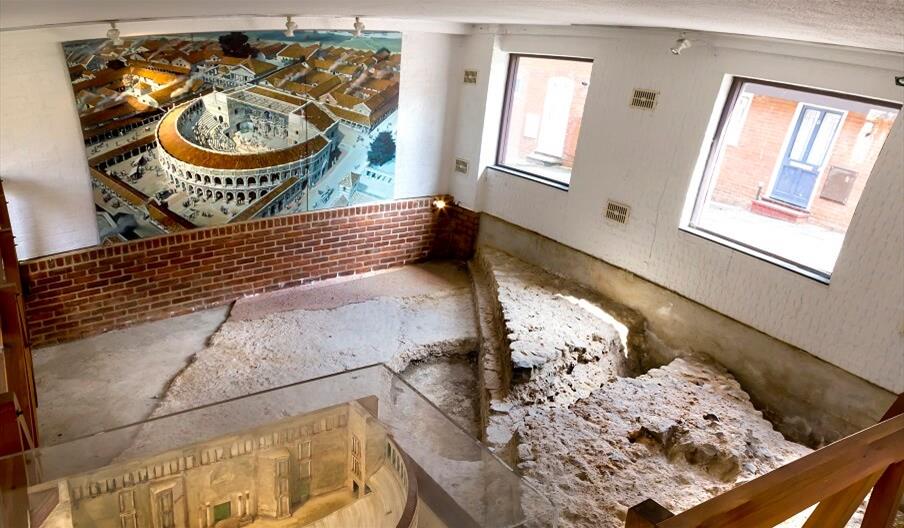
Other interesting sights of Roman Colchester include the foundations of one of the remaining Roman theatres, which can still be seen in Maidenburgh Street, in the Dutch Quarters of Colchester. It is currently preserved in a modern building (the exterior looks just like a regular house), and visible under a glass pavement. The theatre could originally seat 3000 spectators and was built in a D-shaped plan, with the curve facing south. Behind the building, there used to be a garden.

The theatre was discovered in 1981 when the Colchester Archeological Trust was running excavations in the area. Further research shows that it was mentioned in Tacitus’s account of the Boudican attack on Colchester – an attack carried out in 60 AD by Queen Boudica of the Iceni.
No booking is required to visit the Castle. It’s open Monday to Saturday from 10:00 to 17:00 and Sunday from 11:00 to 17:00. Admission is £10 GBP. The Theater can be visited on open days. Contributed by Claudia Tavani, My Adventures Across The World.
Arbeia Roman Fort South Shields
Arbeia Roman Fort is at South Shields in northeast England, approximately 10 miles east of Newcastle upon Tyne. Overlooking the south bank of the River Tyne, the fort was a garrison and supply base for Hadrian’s Wall. Arbeia was strategically located at the eastern end of the wall, which is today a UNESCO World Heritage Site.
This fort’s Latin name was derived from the Arabian troops, from Mesopotamia, that was once stationed on the northern frontier of the Roman Empire. Fragments of letters written to troops stationed here, leather footwear and jewellery count among the ancient artefacts displayed within the compact museum at Arbeia South Shields Roman Fort, which is free to visit. The informative museum also displays gravestones and personal items from the wealth of finds excavated at the site.
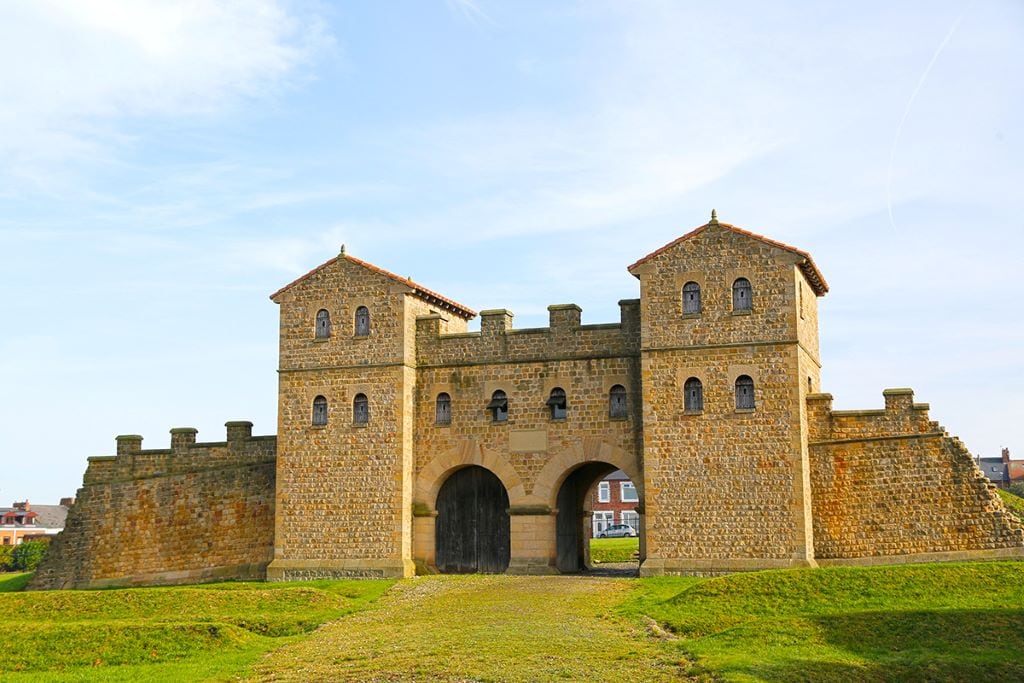
Excavations of Arbeia began during the late 19th century. Outlines of granaries and barracks can be viewed at the fort, which is a 10-minute walk from South Shields Interchange, a public transport hub served by Metro trains and buses. Parking is available nearby. Youngsters are likely to be captivated by the re-enactments and events such as gladiatorial battles that are organised at Arbeia.
The fort’s imposing west gate has been reconstructed, along with undulating earthworks that convey how difficult Arbeia would have been to attack when the Roman Empire was at its mightiest. Visitors can also step inside a reconstructed barracks block and the commanding officer’s house. Figures and displays help convey how the interiors would have looked when they were in use approximately 1,800 years ago. Contributed by Stuart of Go Eat Do
Roman Ruins in York: City Walls
Encompassing the beautiful city of York are its equally impressive City Walls. Originally built by the Romans in 71AD, some form of walls have defended the city for nearly 2000 years. In Roman times, the walls would have been much smaller than today, however, the foundations of these Roman walls form part of the existing walls. Over their long history, the walls have had several upgrades, fallen into disrepair and been upgraded some more.
The most intact structure remaining from the Roman walls is the Multangular Tower located in the Museum Gardens. This stone tower was mostly built between 209AD and 211AD by visiting Emperor Servius. The 9m tower was further built upon in 300AD and again during medieval times. The change in stone and style is clearly visible when looking at the tower, with the bottom 6 metres having been built by the Romans.

Today, visiting the Multangular Tower and walking along the City Walls is one of the best things to do in York. From atop the walls, you’ll be rewarded with some of the best views of the city and the York Minster. The walk is 2.8 miles long and you should allow a couple of hours to take in the views and sights along the way at a comfortable pace.
It’s completely free to walk the York City Walls and they are open each day from 8 am until dusk. There are several different areas you can start or end the walk so you’re not committed to having to walk the entire route. Contributed by Sophie of Travels of Sophie
Want to read more about the Yorkshire area?
16 of the best things to do in North Yorkshire England
Rievaulx Abbey a haunting ruin in North Yorkshire
All the best things to do in Pickering North Yorks
14 Things to do in Whitby England
The Shambles York the oldest medieval street in the world
Scarborough UK – 31 entertaining things to do
Birdoswald Roman Fort Cumbria
Birdoswald Roman Fort is located in the north of England in Cumbria, close to the town of Carlisle. Originally it was known as Banna and is located towards the western end of Hadrian’s Wall. It was founded in AD112 and is one of the best-preserved Roman defences on Hadrian’s Wall.
For 300 years, Birdoswald was one of 16 forts built along the length of the wall. It is unusual in that it is one of the few forts that continued to be used after the Romans abandoned it in AD500 and even today a farmhouse stands on the edge of the ruins.
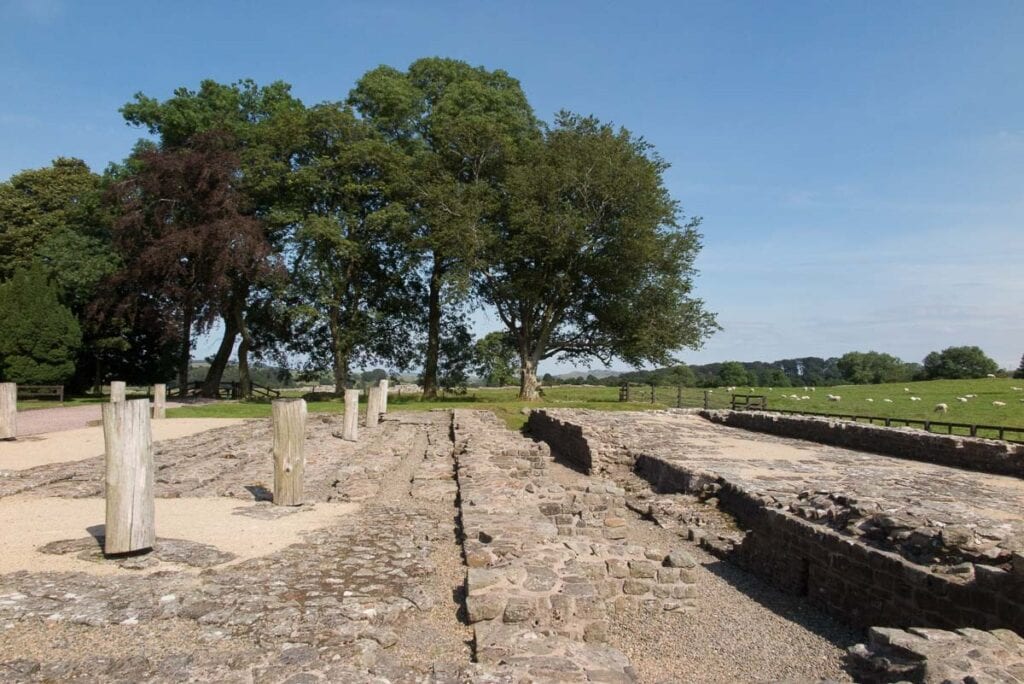
The fort is located on the top of a hill with stunning views out across the Cumbrian countryside and at the bottom of steep cliffs, the River Irthing flows. There are a number of structures still visible although they are in ruins. A short walk from the fort takes you down to the shallow River Irthing. A bridge called Willowfield Bridge carried the wall across the river and the remains can still be seen today.
As well as the remains of the fort, it is possible to walk a short part of the wall. The section that passes through Birdoswald is the longest intact stretch and runs into the distance in both directions.
Birdoswald is clearly signposted off the A69 which links Carlisle and Hexham. It is managed by English Heritage and entry is free for members or £9.90 for adults and £6 for children. There is a good visitors’ centre which tells the history of the fort and the surrounding area and you are free to explore the whole area at your own pace. Contributed by Suzanne of Meandering Wild.
Vindolanda Northumberland
Vindolanda Roman Ruins was built around AD 85, and it’s one of the most popular Roman forts, just like the Hadrian’s Wall. The fort contains a bunch of beautiful Roman ruins and a great museum.
Vindolanda also contains various structures, including a post-Roman mausoleum, a church, and a pre-Hadriatic baths complex, which can all be found at the Northumberland site.
Other sites found at Vindolanda include barracks and military offices dating to the Severan dynasty (between AD 193 and 235) and several other sites from the 3rd and 4th centuries, such as workshops, houses, a temple, a Praetorium, as well as more baths.
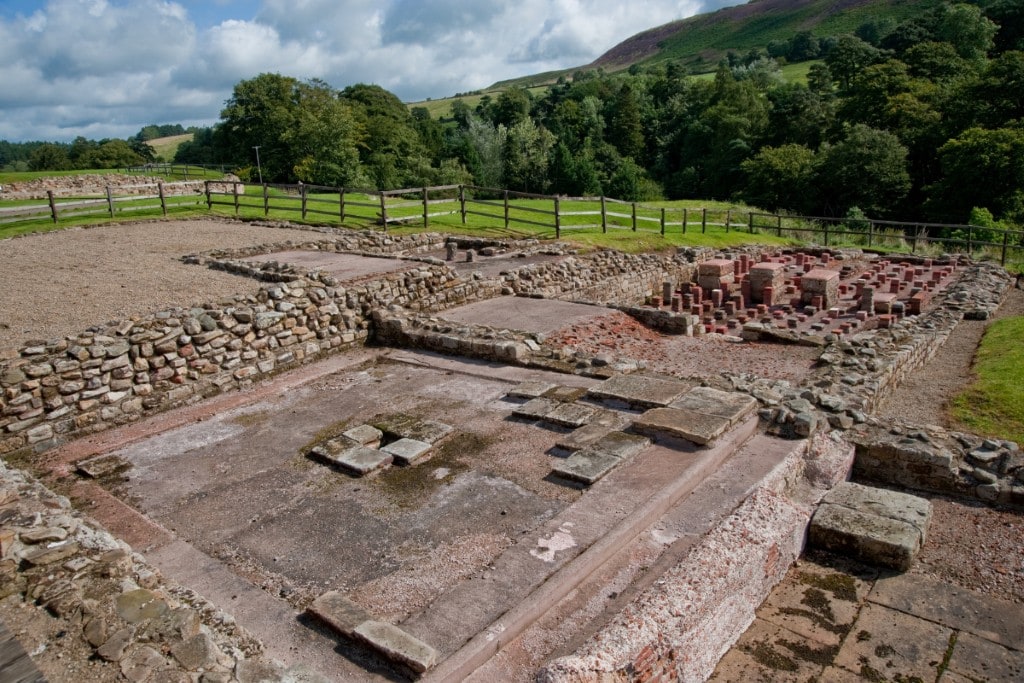
The Vindolanda museum also has a range of artefacts, including one of Britain’s biggest ancient leather collections.
Excavations happen on the site each year, which attracts lots of volunteers worldwide. There are oxygen-free conditions (anaerobic) on the site, which amazingly preserves the artefacts.
All the astonishing objects discovered during the excavations are often displayed magnificently on the museum down the hill to the fort’s east. These include outstanding and unique tools, military equipment, wooden artefacts, jewellery, leather shoes, carved stone, pottery, and other religious artefacts.
The Vindolanda writing tablet is also displayed in the museum, which is Britain’s Top Treasure and the oldest surviving British handwritten document.
The writing tablet is basically a small wooden postcard-sized document, which recorded the lives of people who once lived in the place, such as birthday party invitations, letters from soldiers asking for underwear and socks, payment requests, troop deployments and lists of goods supplied.
The Vindolanda Roman Ruins enable visitors from all walks of life to connect with the real people who once called the site their home. So, if you’re looking for a place to travel with your family, then Vindolanda might be a perfect destination point.
With a £10.00 ticket, you will have unlimited access to both the Roman Vindolanda Fort and the Roman Army Museum for one year. While the £3.80 tickets offer you single access to either the Vindolanda Fort and the Roman Army Museum. Contributed by Theodore of Camperfront.
Roman Walls Silchester
In 2014 in the last week of the dig in Berkshire at Silchester, the team found what they believe to be the largest Iron Age hall ever found in Britain. The thought is that this huge hall which was around 8 meters by 50 meters and may have been Commius’s home. They believe this is due to a beautiful iron age brooch that was apparently deliberately deposited in the foundations.
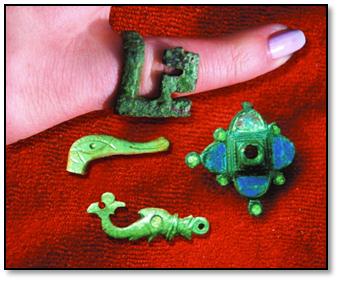
The first Roman buildings on the site were light military structures, and the historians think (due to the archaeological evidence) that the town was burnt down and they guess it might have been done during the Boudica rebellion.
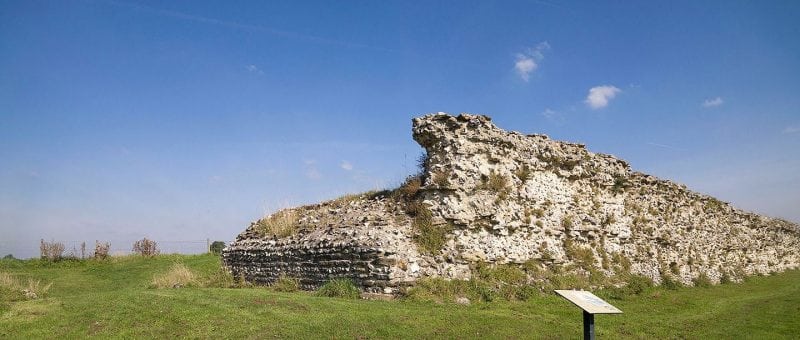
If you head out to see the Roman Ruins at Silchester be aware that you can walk the walls and catch glimpses of them but the paths are not well marked and although it is a beautiful walk there is really not that much to see unless you use your imagination.
Chedworth Cotswolds
Chedworth Roman Villa in the Cotswolds has some of the most incredible virtually intact Roman mosaics in England. The Villa is comprised of bath-house rooms and hypocaust systems, and a Nymphaeum Water Shrine that is still fed by the same waters. You can walk along the suspended walkways to view the mosaics. There is also an onsite museum with some fascinating artefacts. The cost of an adult ticket is £11.00.
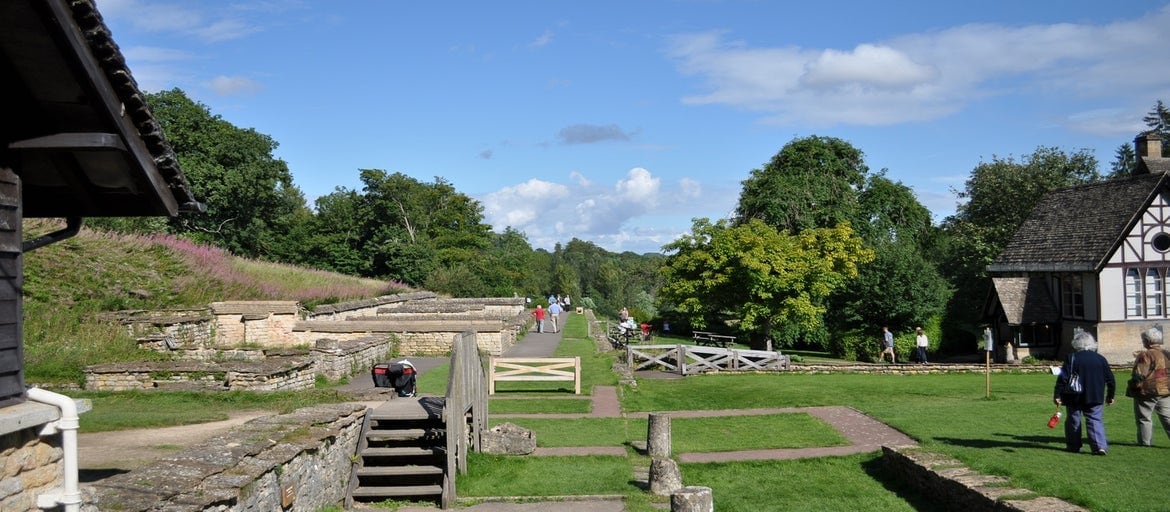
Viriconium Wroxeter
Viriconium (Wroxeter) was once the fourth largest city in Roman Britain it was almost the same size as Pompeii in Italy.
Founded in the mid-1st century AD as a fortress it was inhabited until the 7th century. Archaeologists have been able to use cutting-edge technology to reveal details of the city, which has led to a revolution in our understanding of Roman history in Britain. Wander the remains of the bathhouse and explore a reconstructed townhouse.
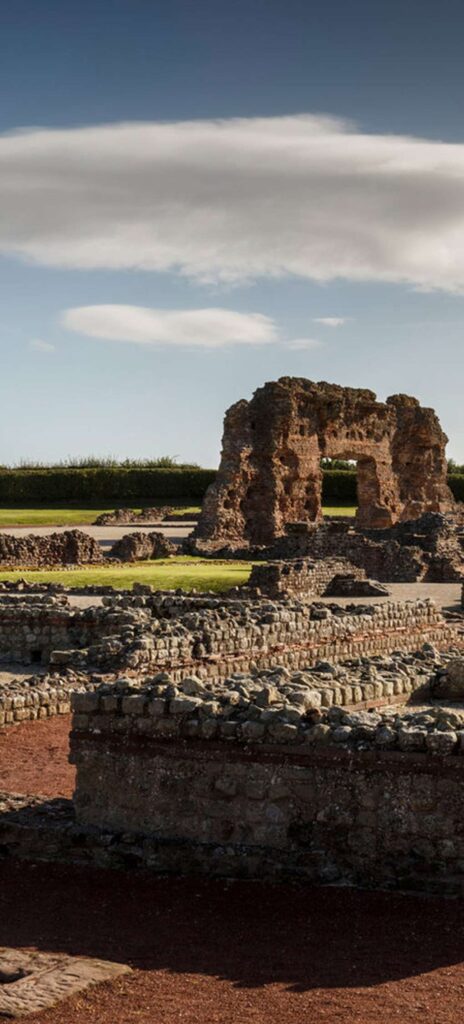
The founding of both baths and a forum at the same time has suggested to some scholars that Emperor Hadrian was personally responsible for ordering the construction of these buildings.
Littlecote Villa and Mosaic
Tucked away in the grounds of the Grade I Tudor manor Littlecote House Hotel near Hungerford in Berkshire, is one of the most beautiful Roman ruins in Britain. The above-ground ruins of Littlecote Roman Villa and Mosaic were discovered in the 1720s and are quite unexpected.
From the exposed internal and external walls, you can see the outline of the shape and size of the villa. It is estimated that the villa was constructed in the 1st Century AD with later additions including a bakery and brewery around 120 AD.
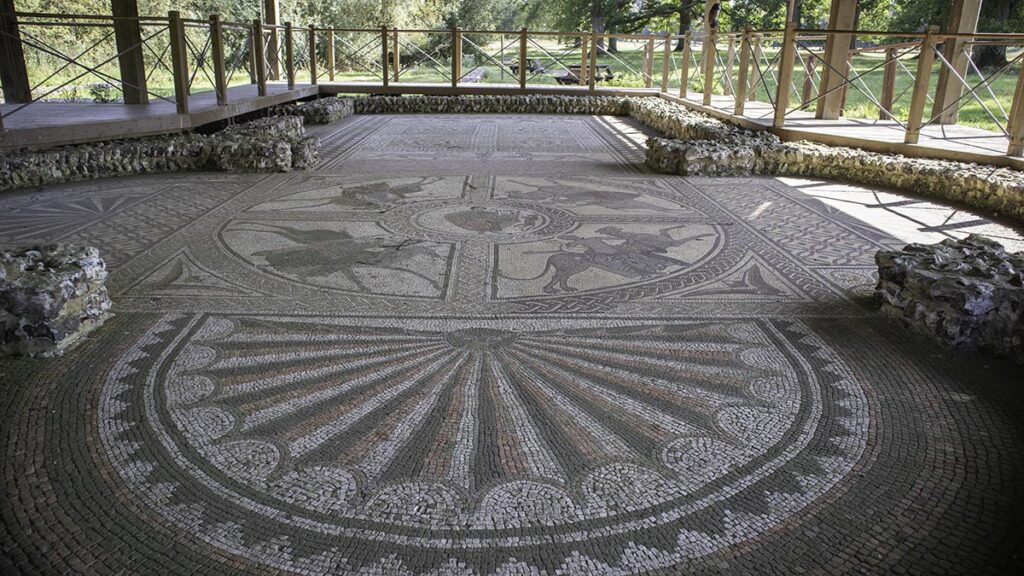
Around 360 AD the previous villa was demolished with only 3 walls kept forming the new building.
This new building included the magnificent mosaic depicting at its centre Orpheus surrounded by four female deities, possibly representing the Four Seasons. These could be Persephone Venus, Nemesis and Demeter.
The mosaic itself is very well preserved and a protective cover and walkway around it have been installed to keep it safe.
The site was originally discovered in 1727 and the discovery was recorded with The Society of Antiquaries of London in April 1728. By 1730, the mosaic has been reburied and lost.
It took over two hundred and forty years for it to be discovered again in 1977. By this time only about half of the mosaic had survived due to weathering. The site was meticulously excavated and the panels that had been damaged were replaced in modern terracotta.
Littlecote Villa and Mosaic are free to explore and there is plenty of parking on the grounds of the Littlecote House Hotel, and a couple of minutes walk to the field.
Inside the hotel, some of the items found during the excavation are on show and there is a gift shop that sells a guidebook on the house and the mosaic. Contributed by Larch from SilverNomad.
Dorchester Roman Town House
As with many historical sites, the discovery of the Roman Town House in Dorchester, England was something of a happy accident. It also occupies rather an unexpected location.
Colliton Park is where you’ll find Dorset County Council’s headquarters. The site was obtained by the Council in the early 1930s. Before building began, the Dorset Natural History and Archaeological Society undertook some investigative work at the site – and discovered the Roman Town House in the late 1930s.
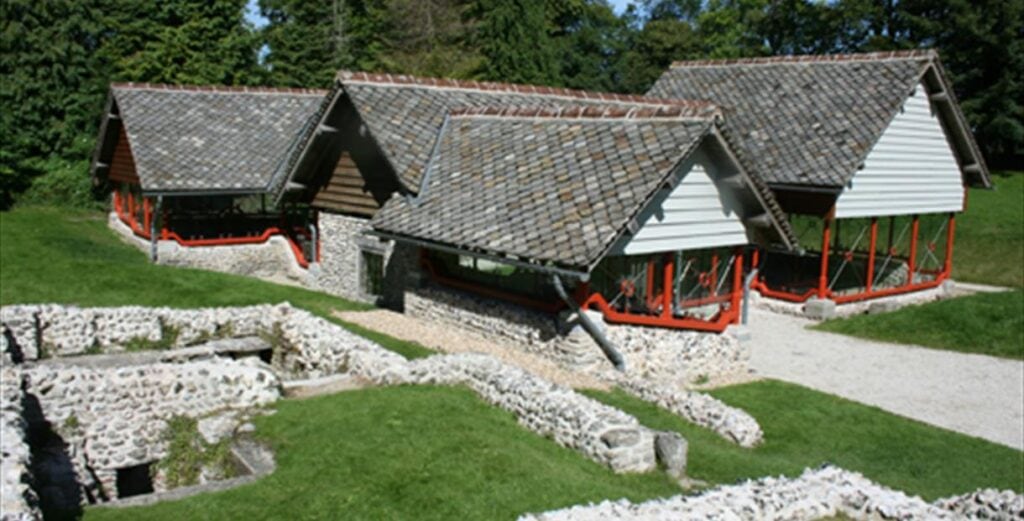
The plans for the new County Hall were thus amended to accommodate the Roman Town House, and it still occupies this rather incongruous site at Dorset County Council HQ. It is now a Grade I listed building as well as a scheduled monument.
Visitors can usually access the Roman Town House during daylight hours, all year round. There is no fee to pay for entry, making this an ancient relic that is accessible to everyone.
The Town House is bordered by the West and North Walks on two sides, and the remains of the town’s original Roman ramparts are just beneath the surface. There are two sets of rooms that form the L-shaped house.
The South Range comprises rooms 1–7 with stone and flint walls. The West Range contains rooms 8–18, and here you can see the original Roman mosaic tiled floor. A glass and steel structure with a tiled stone roof
was constructed to protect the remains in the late 1990s. The original foundations were used as a base.
The UK is packed with ancient monuments, yet the Roman Town House in Dorchester is the only entire Roman Town House in the land. This building dates from the 4th century AD. Contributed by Tracy from Let’s Travel UK
London Roman amphitheatre
In 1988, Museum of London archaeologists made an astonishing discovery that changed the face of Roman London. During an archaeological dig taking place in preparation for the new Art Gallery building project, it was found that the capital’s only Roman amphitheatre was located in the Guildhall Yard. In 2002, the doors to the amphitheatre opened for the first time in nearly 2,000 years.
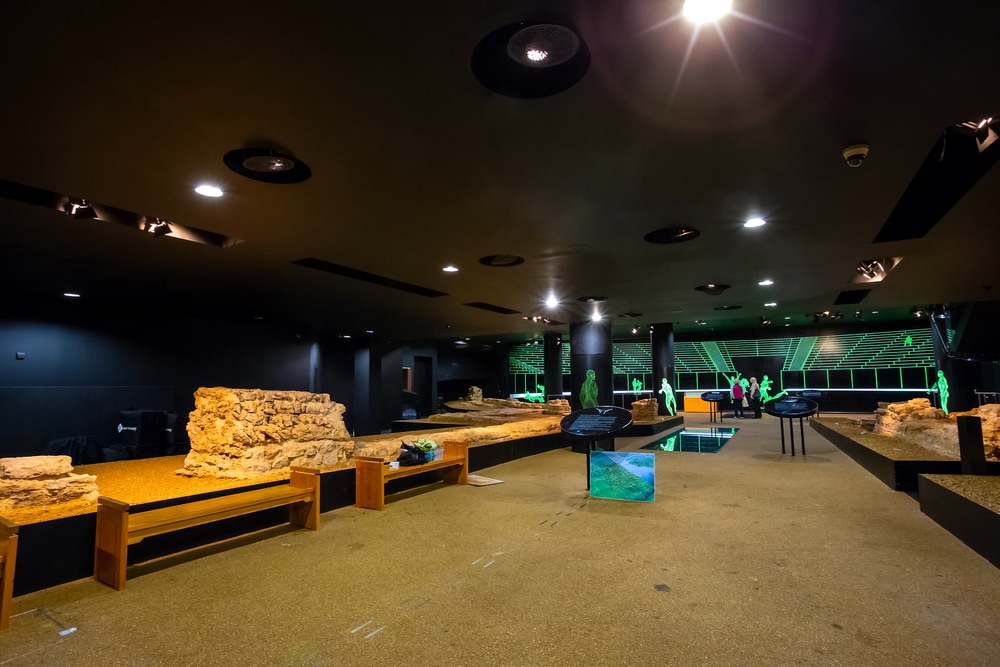
Roman Ruins in Wales
Caerleon – Isca
Caerleon is located very close to Newport in South Wales. This was one of the important sites of ancient Roman settlements in the UK. Today, the ruins of Caerleon Roman Baths, Amphitheatre and barracks are present on this site. There is also a museum dedicated to the Roman artefacts excavated here.
Of the various sections of a typical ancient Roman bath, only 1 pool is still surviving. The entire place is covered today and gives a museum-like feel. The Roman museum showcases various bathing products, jewellery, weapons, coins etc, as well as a human skeleton that was excavated here. There were also quite a few examples of Roman mosaics. Amphitheatre & Barracks are open-air.

The entire Amphitheatre is covered with grass today and looks incredibly picturesque. It is not possible to go under construction like it is possible elsewhere like Colosseum but just walk over it. The barracks are in complete ruins, but the plan is still visible on the ground. There are the dorms of the soldiers as well as their public toilets.
All the 3 places are located very close to each other and walkable from each other. There is no entry fee for any of these sites though it is necessary to book a time slot esp for the bath & museum. While the museum closes by 16:00 or 17:00, the Amphitheatre & barracks is open till sunset, so keep it last. Btw, while you are here in this region, you may also want to visit Newport Castle. Contributed by Bhushavali of Travel Bhushavali
Brecon Gaer – Bannium Cicucium
The remains of this Roman fort are found behind a farm off the A40 in Aberyscir, Brecon, Wales there is no charge to visit simply walk through the farmyard and go through a gate to see the fort.
This area was the territory of the Silures tribe, who – before they settled down at Caerwent – caused the Romans a lot of headaches. The fort you see now dates from around 140AD and it was a station for the Soldiers of the Second Legion.
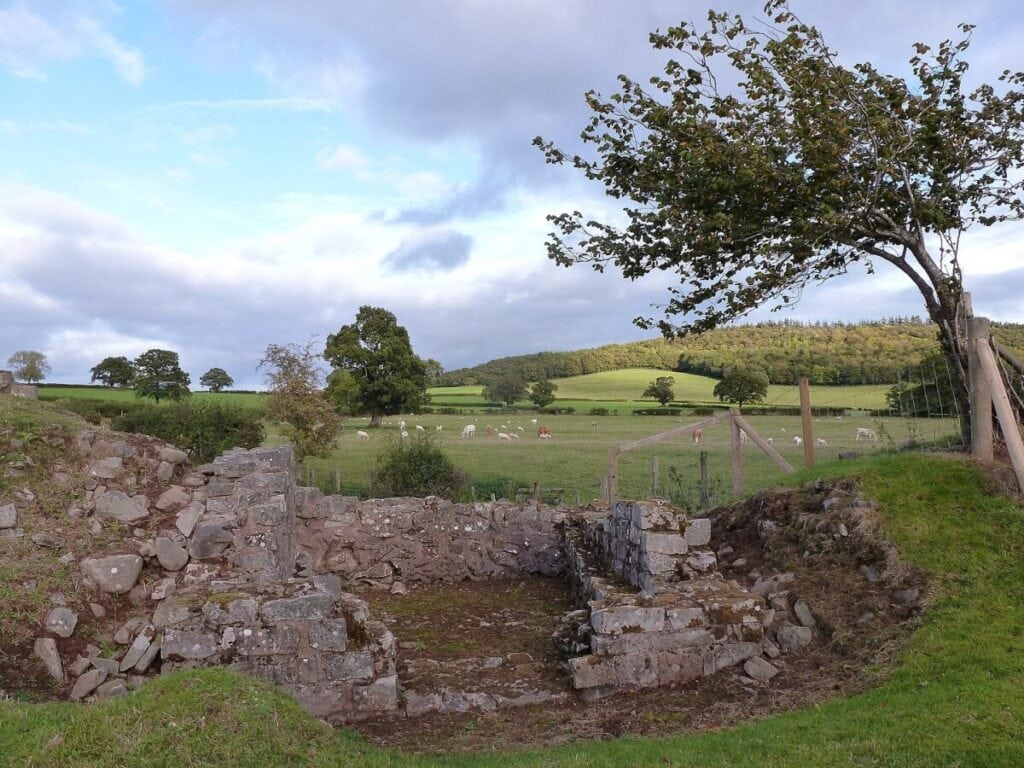
You can explore the gatehouses and see the distinctive shape of the fort but the headquarters, bathhouse and barracks are buried under the grass. Many tombstones were found near the fort during excavations, e.g. Candidus, a young cavalryman. It is now in the Brecknock Museum in Brecon.
Tomen y Mur
A first-century Roman fort located in Snowdonia the fort was built by General Gnaeus Julius Agricola in 78AD as part of his campaign to control the Ordovices, a Celtic tribe who opposed Roman rule.
The ruins and the shape of the landscape around Tomen y Mur suggest that the site once contained a bathhouse, a mansio (a house for visiting officers), a temple, a military amphitheatre and a training field. At one time, four Roman roads met at this point.

The Romans left the fort in 140 AD. A millennium later, the Normans erected a castle motte within the walls of Tomen y Mur during a Welsh uprising in 1095.
Caerwent Roman Town Wales
A reader just let me know about this hidden gem in Wales – Caerwent, Venta Silurum to the Romans, is one of those ‘best-kept secrets. It is near Caerleon (Isca), one of Britain’s most important Roman towns. Caerwent was established in about AD 75–80, as the tribal capital of the Silures (Venta Silurum). There are impressive fourth-century walls standing up to 17 feet (5.2m) high. Several excavated houses, a forum basilica and a Romano-British temple along with a marketplace. The Silures were a local tribe that became Romans following the conquest of Britain. It was a busy place complete with public baths, spread out in a typical well-ordered Roman grid.
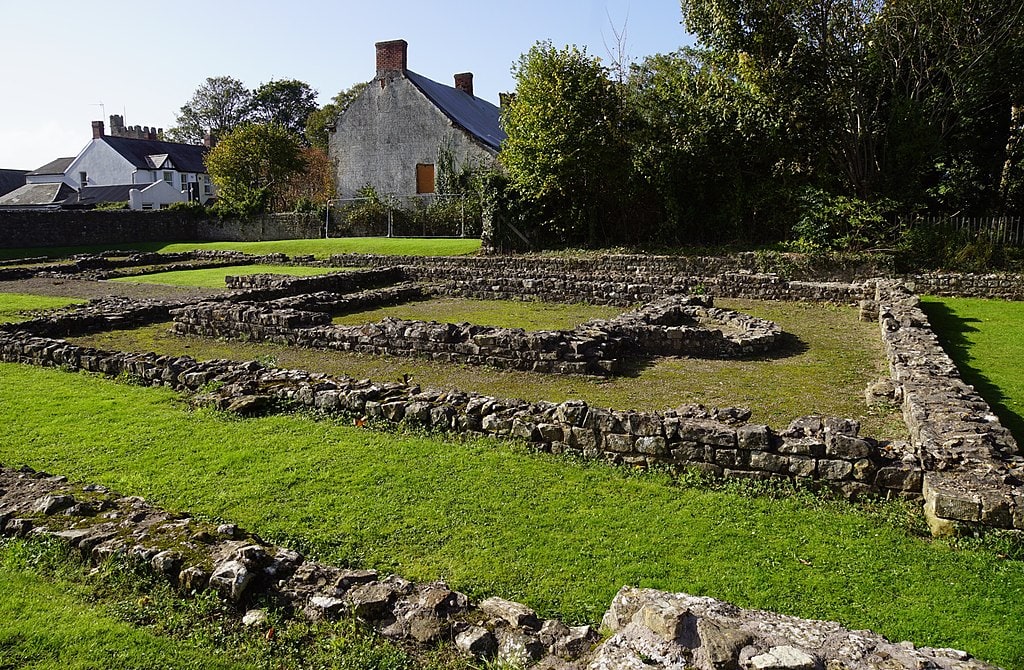
Want to read more about Wales?
North Wales Coastal Path the famous Pilgrim’s Way Route
7 of the most beautiful beaches on the Pembrokeshire Coast Wales
All the Best Things to Do in Anglesey: A Comprehensive Guide
Roman Ruins Scotland
Antonine Wall Scotland
The Antonine Wall in Scotland was built by the Roman Army under Emperor Antoninus Pius sometime after AD142. It marks what was the northwest border of the Roman Empire.
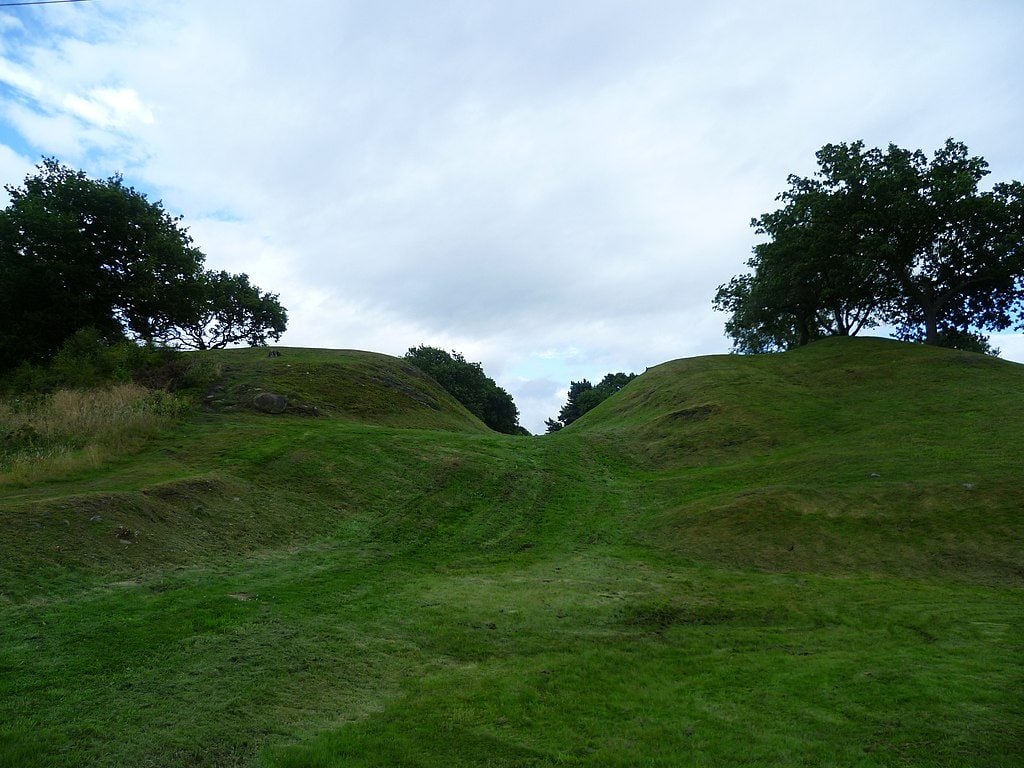
Built some twenty years after Hadrian’s Wall which is found to the south, it was the northernmost frontier barrier of the Roman Empire.
What is the Antonine wall length? The wall spanned approximately 63 kilometres (39 miles) and was about 3 metres (10 feet) high and 5 metres (16 feet) wide.
The Wall is under the care of Historic Scotland. Despite the passage of time, substantial lengths of this remarkable monument can still be seen at various sites. One of the best viewing points is near Bonnybridge, where the line of the Antonine Ditch and Wall can be clearly seen running for a quarter of a mile through Seabegs Wood, to the south of the Forth and Clyde Canal. At this point, the ditch is still some 40 feet wide, but only 6 – 8 feet deep. In places, the rampart survives to a height of 4 feet.
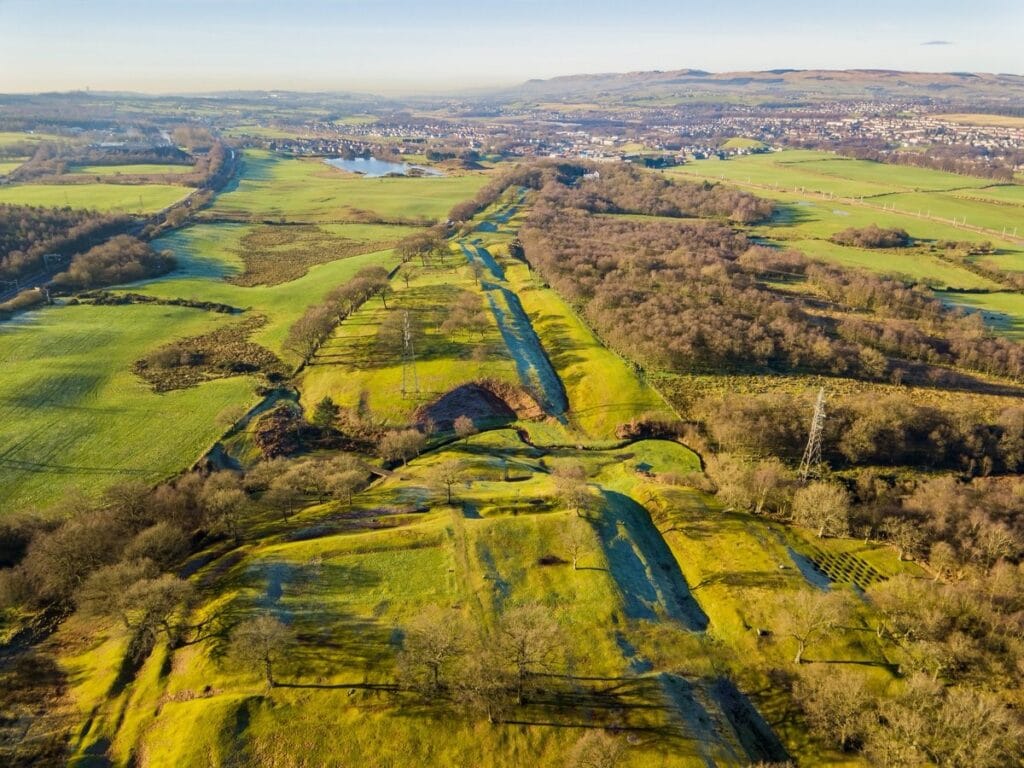
About 37 miles long, it’s a giant earthwork that crosses the narrowest part of Britain, from Bowness on the Firth of Forth to Old Kilpatrick on the Clyde.
Substantial sections of the wall (which was built of turf rather than stone) and its buildings (such as forts) still remain
Want to read more about Scotland?
The perfect Ireland and Scotland Itinerary
Journey to the Black Isle of Scotland the amazing mysterious isle
Dumfries and Galloway Scotland exploring a literary heritage
Visit Edinburgh – the historic heart of Scotland
There are many museums in Britain that have fantastic exhibits on the Romans in Britain including the World Museum in Liverpool. The Roman ruins scattered across Britain stand as timeless witnesses to a remarkable era of history. These archaeological sites not only capture the imagination with their grandeur but also provide invaluable insights into the lives and achievements of the ancient Romans who once called Britain their home.
